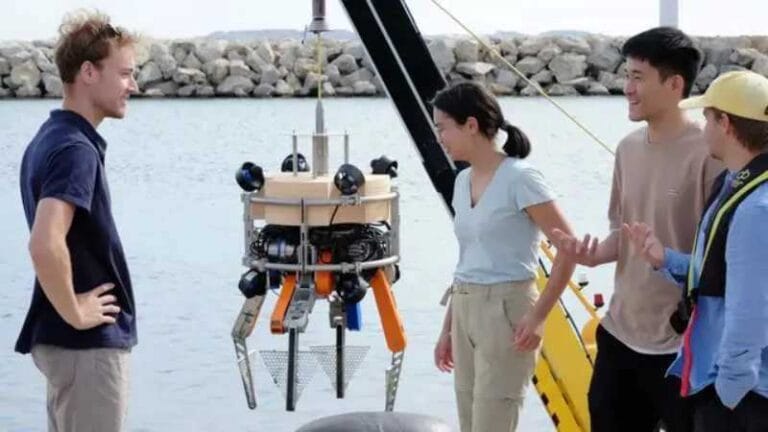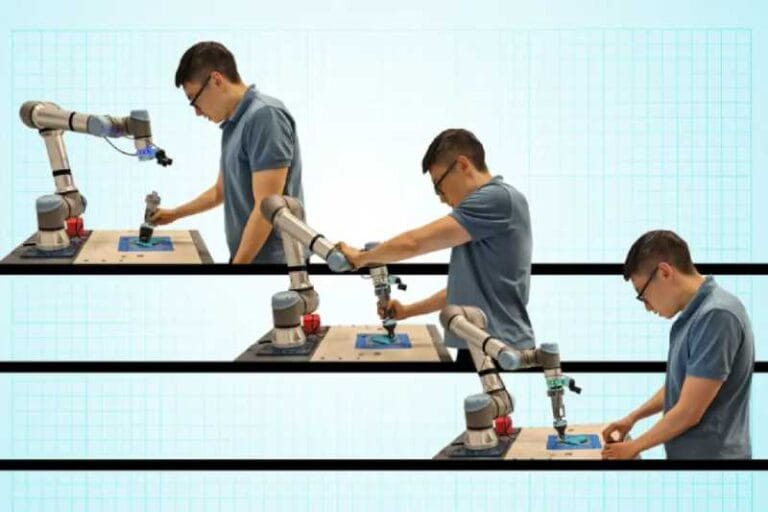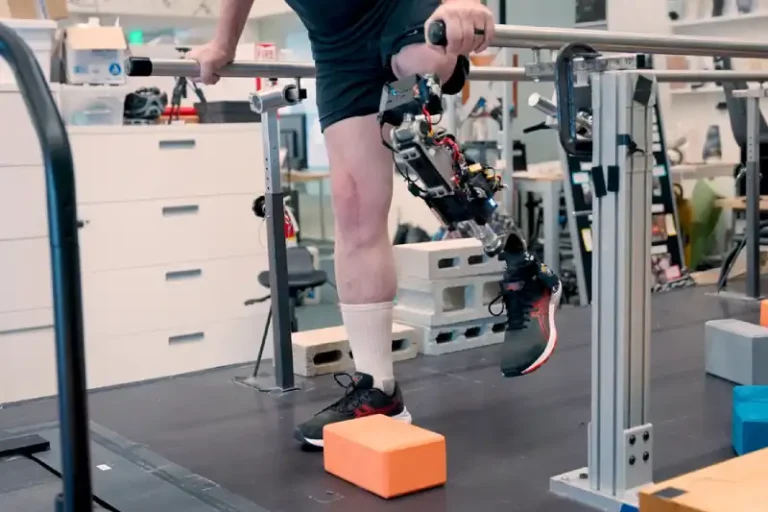Wearable device promises greater independence for people with visual impairments
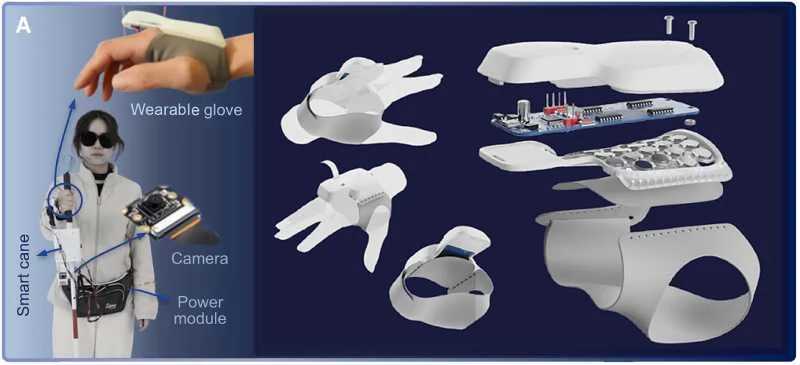
A group of researchers has developed WanderPal, a smart wearable device that could radically change the way people with severe visual impairments navigate cities. The device combines artificial intelligence and tactile feedback to provide greater safety and independence in urban environments, where navigation is often a significant challenge for this population.
According to a study published in the journal Device, the solution aims to overcome the limitations of existing technologies, such as smart canes and voice-based apps. While these tools are useful, they often fail to provide accurate information in noisy, crowded areas or places with confusing signage. Additionally, they can cause sensory overload by attempting to transmit too much data at once.
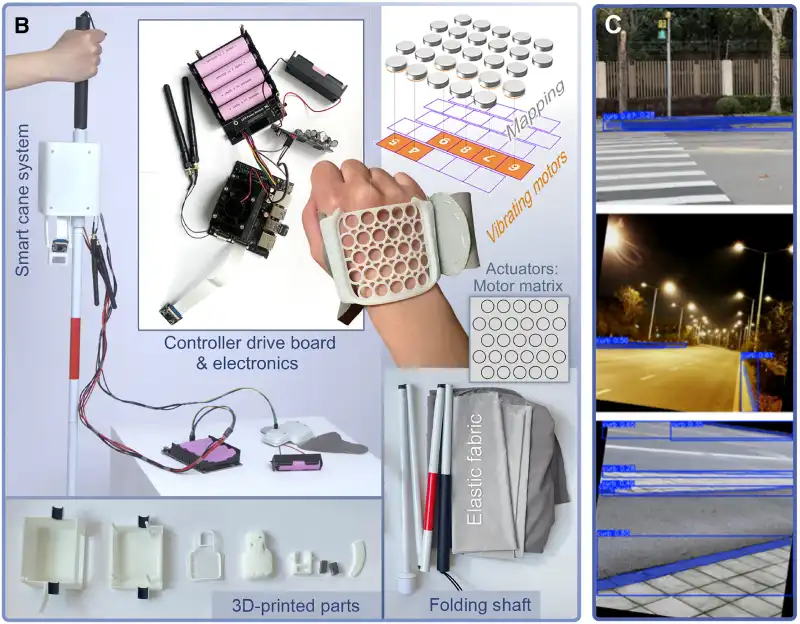
One of the central findings of the research was the importance of curbs as navigation landmarks. During interviews and tests with blind participants, the researchers discovered that, in practice, users rely more on constant physical elements than on variable references, such as street signs or building facades.
WanderPal was specifically designed to leverage this preference. The device uses an advanced computer vision model to detect curbs in real time and convert this information into vibrational signals. Rather than giving the user a direct command like “where to go,” it provides a tactile indication that allows them to interpret their surroundings and make decisions independently.
This aspect was considered essential in its development: offering independence without imposing predefined routes. As one participant in the study explained, many existing solutions “only tell you what to do instead of providing information about what’s around you.” WanderPal seeks to reverse this logic, giving users greater control over their movements.
Another distinguishing feature of the project is its development process. The team adopted a participatory design approach, involving people with visual impairments at every stage. In addition to interviews, auditory simulation tests and collaborative workshops were conducted.
These activities revealed, for example, that users prefer short, clear information conveyed simply, such as vibrations in specific areas of the hand. They also highlighted privacy concerns: many participants were uncomfortable with conspicuous devices, such as visible cameras or bulky glasses. As a result, the final solution integrated the camera into the cane and kept the glove discreet and lightweight.
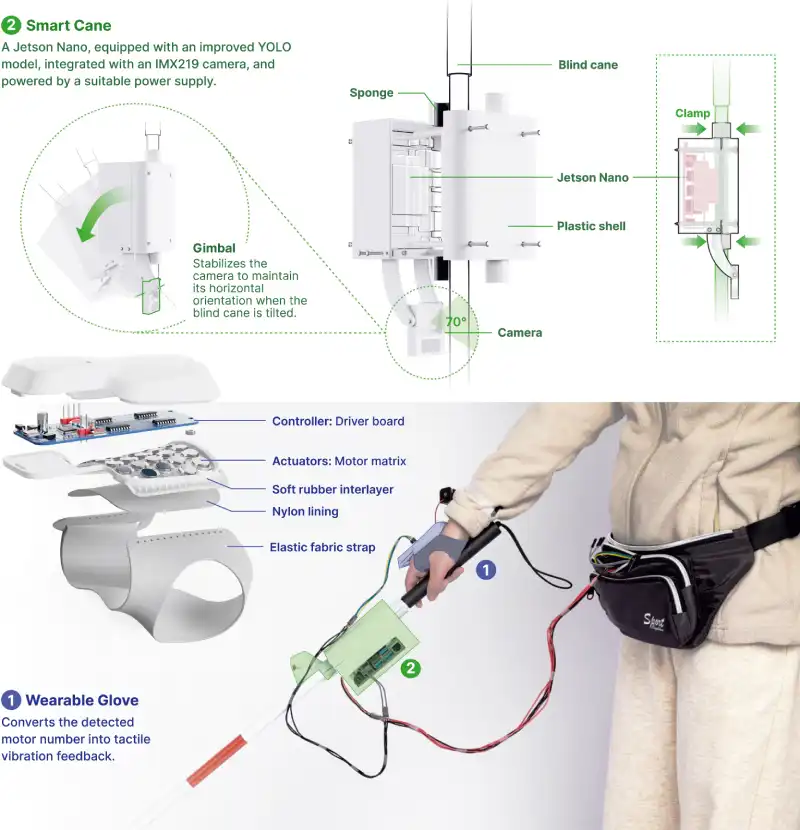
Field test results
To evaluate its effectiveness, WanderPal was tested in real-world situations with six participants. Each person navigated unfamiliar routes using only a cane and then repeated the routes with the support of the device.
The results were notable:
- Walking time was reduced by an average of four minutes.
- The number of route deviations dropped significantly.
- Users reported feeling more confident and safe, especially in areas with heavy traffic and high noise levels.
Although the device did not completely eliminate collisions with obstacles, participants highlighted that the continuous vibration provided a more stable sense of orientation—something that audio-only navigation does not always ensure.
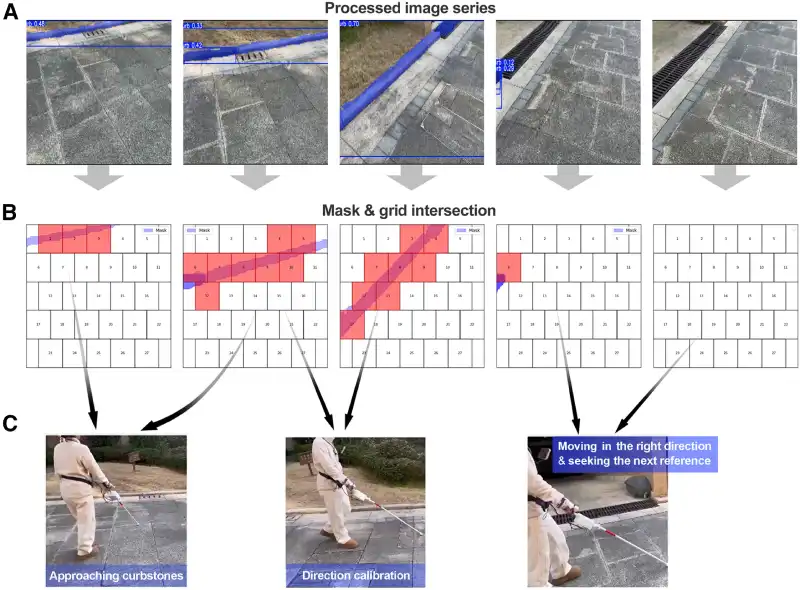
Despite the initial success, the researchers acknowledge some limitations. In very crowded areas, when curbs are obscured by pedestrians or vehicles, the system may fail. Additionally, some users suggested that the technology should provide alternative reference points when sidewalks are not visible, such as detecting ramps or tactile floor markings.
The team now plans to expand testing, integrate new sensors, and explore ways to personalize the feedback, allowing each user to adjust the type of information according to their mobility style.
A step forward for inclusive mobility
WanderPal represents more than just a technological prototype. It symbolizes a shift in approach: rather than designing solutions in isolation, the research highlighted the value of creating tools in collaboration with those who actually need them.
By combining artificial intelligence, tactile feedback, and human-centered design, the device points toward a future where people with severe visual impairments can navigate with greater safety, independence, and confidence.
The WanderPal device in action
More information: Xin Chen, Yujie Gu, Cecilia García-Cena, Pooya Sareh. First published: September 12, 2025. S2666-9986(25)00237-6




